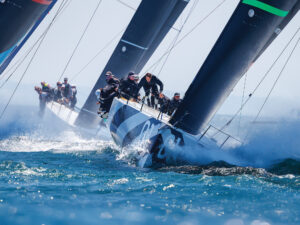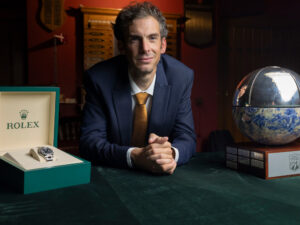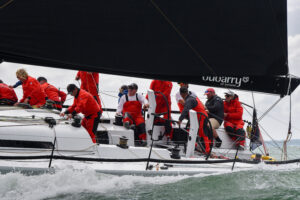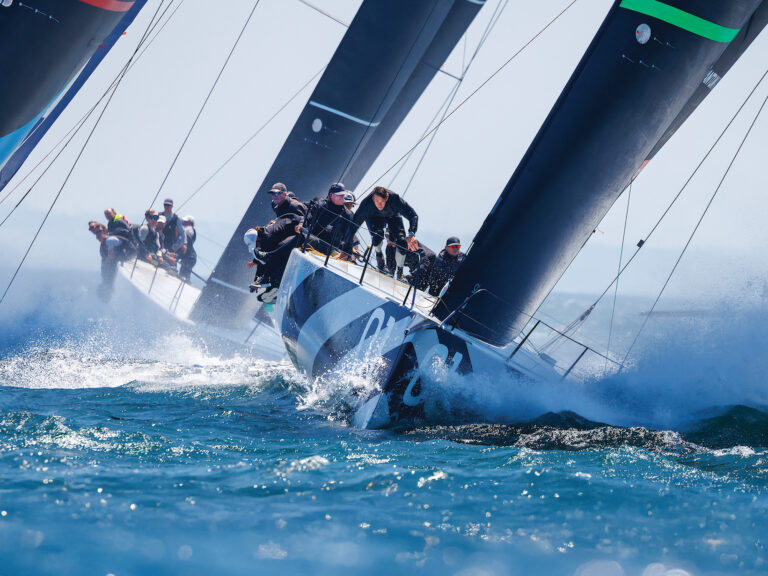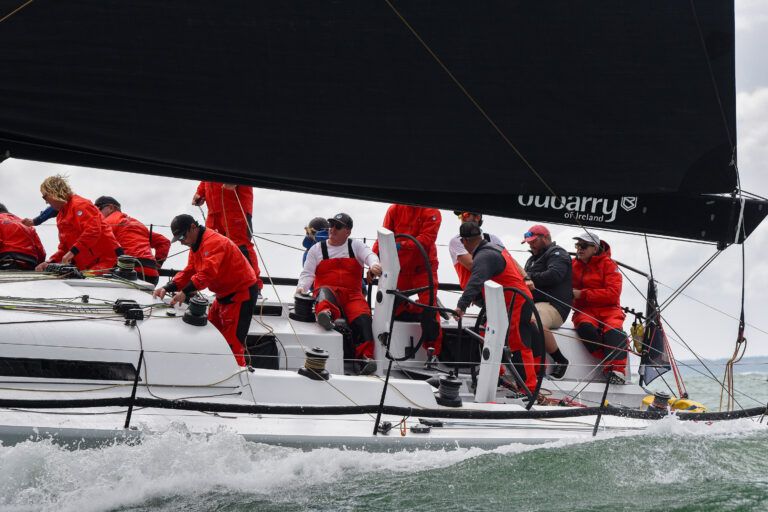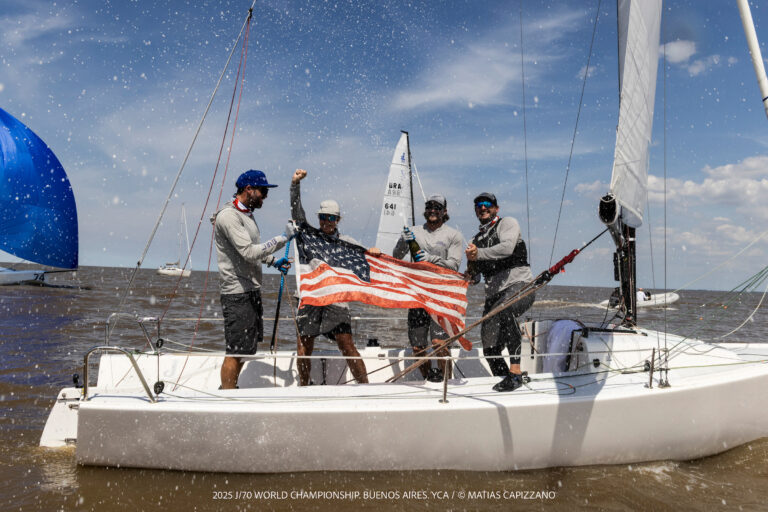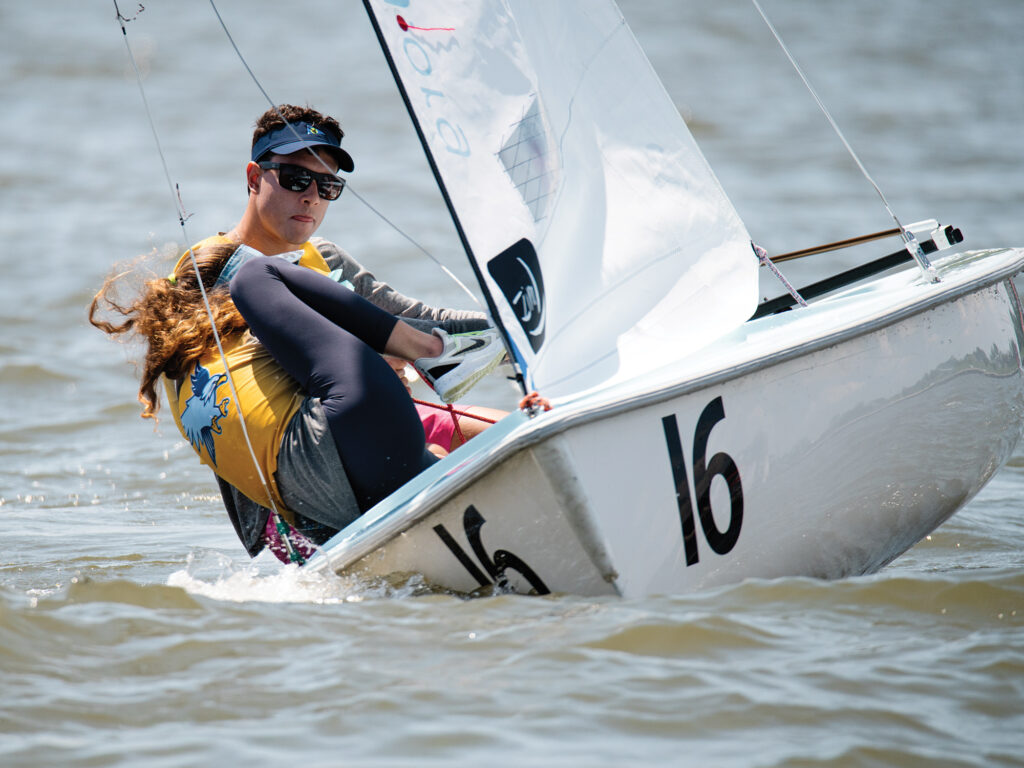
Charles Higgins, head coach of Tulane University’s sailing team, has been coaching collegiate sailors for nearly two decades, and he knows what’s required to get his sailors to the top. “If you’re trying to win championships, you need a skipper in each position to at least get you close to the podium. But the crew is going to be the difference that gives you the win.”
That difference was on full display when Tulane finished second at the 2025 Women’s Fleet Race National Championship, an achievement Higgins attributes to his team’s depth and versatility, especially when it comes to his crews. “We need crews who are excellent and amazing when it’s blowing 25 to 30,” he says. “Very few teams can compete at an elite level in those conditions, and we want to be one of them.”
In college sailing, the spotlight often falls on the skipper, but spend any time around top programs, and you’ll understand why these teams are so successful. It’s the crews that often make the difference. The best crews are athletes, tacticians, and exceptional communicators. They don’t just pull in the jib or take directions from their drivers; they call shifts, keep the boat moving, and set the tone onboard. As coaching gets sharper and as technology pushes the sport forward, the role of the crew has progressively become one of the most demanding and decisive elements of the game.
Many of the most elite college crews are produced by college coaches who are exemplary crews themselves. Amanda Callahan, head coach of the Roger Williams University sailing team, applies her own crewing background to her coaching, which can be seen through her teams’ unique and effective tacking style. Coined by Callahan as the “leg-up” or “chicken wing” tack, she explains that this technique helps her crews to be “a little bit more explosive through the tacks and to have snappier tacks when you need them.”
She adds, “You don’t need them all the time, obviously. But that is something that’s definitely unique to our program.”
This level of technical sharpness is far from a gimmick. It represents a broader evolution in college sailing, where crews are no longer expected to be a passive aspect of the boat. They’re tactical assets, physical performers, and often the emotional core of the boat.
What’s often missed is how much effort and dedication crews put into honing their craft. When asked what separates good crews from great ones, Callahan responded, “athleticism number one; you really have to be able to move with a lot of power through the boat, but also, with a lot of finesse.”
For Callahan, developing good crew boathandling is essential for top results. This level of performance requires discipline, consistency, and internal motivation. Maren Matthews, a rising senior crew for Roger Williams, explains, “We really focus on strength and conditioning at Roger Williams, and we take fitness really seriously. So, since I’ve taken my fitness a lot more seriously, I feel like I’ve been a stronger crew. I don’t have a step-up crew, so I’m sailing in all conditions. I really have to be in the right shape in order to be able to perform at all those different times.”
In addition to prioritizing fitness, Roger Williams’ practice debriefs ensure that crews are involved and supported. These sessions include video review, which Callahan says is focused on crew boathandling, an area where she believes her team sees some of its biggest gains. Beyond physical ability and boathandling, being a top-tier crew also requires excellent communication and versatility.
“Great crews are able to overcome situations with whatever that may be,” Higgins says, “and if so, they will be highly successful.”
Communication and knowledge of the sport are equally critical for crews. Matthews says her team holds additional weekly crew meetings. “The crews all meet up, and we talk about boathandling in specific for team racing boat handling maneuvers,” she says.
Higgins also emphasizes that one major distinction between average and elite crews is their communication style. He notes, “What you’ll find from most great crews is that they’re also going to be able to provide top-end communication and help with the packaging of the information to the skipper to help make decisions.”
Strong crews also bring an emotional and psychological edge to the boat. Chris Klevan, a standout crew himself and head coach of Stanford University’s sailing team, says, “I think the best crews have a sort of confidence that translates over to the driver.” He adds that a confident crew can transform a skipper’s mindset: “I think the best crews…it’s almost like a reputation. When the best crews get into the boat, the skipper just assumes that things are going to be better from here on out, because they’re with, whoever, and then, it kind of manifests. Like the idea that you’re going to do well, probably makes you do a little better.”
In college sailing, crews are no longer expected to be a passive aspect of the boat. They’re tactical assets, physical performers, and often the emotional core of the boat.
Higgins agrees and adds that consistency in high-pressure situations is another defining trait of great crews. He explains, “Consistency always tends to stand out. I think one of the criteria that is looked at by the All-American Committee, this is straight from the criteria on the website: the ability to help improve the results of the skipper that the crew sails with, and great crews have an ability to hop into a boat with someone new.”
What has driven this evolution in college crewing? Higgins believes it comes down to several key factors. One is the rise of high-level coaching, which has positively impacted youth-level crews. “The level of crewing you would see at the top high school level now is far beyond what it was 15 years ago,” he says. “And so part of that is the expansion of really good coaching at that level.”
He also attributes the advancement of college crews to the growing accessibility and use of technology. “Like every other sport, you see that there is a significant uptick in technology,” he says, “in particular video use and photos that people can look and see and coach with as well…now everyone has YouTube, everyone has friends that they can reach out to that have footage, and then they can take that, show it, use it, and really help speed up the process to get people up to a higher level.”
Additionally, Higgins emphasizes the impact that adding women’s team racing as a championship discipline has had on the importance of developing high-quality college crews. “Adding women’s team racing as a championship discipline has put a premium on programs having more and more skilled crews who can compete at a very high level,” he says. “Fifteen years ago, most teams probably focused on their top three or four co-ed boats and maybe two to three women’s boats, and that was it.”
When asked what advice she would give to aspiring college crews, Matthews says it’s all about mindset. She states, “If you don’t have the skill yet, you need to have the mindset of positivity and hard work and grit, and that will get you really far.”
The evolution of college crewing reflects more than advanced coaching, stronger athletes, or better boathandling; it reflects a growing recognition of a role long overlooked. Crews today are thinkers, leaders, and athletes whose presence can determine whether a team makes it to the podium or falls short. But perhaps what makes the best crews stand out isn’t just their skill, it’s their unwavering dedication to the craft. As Klevan puts it, “Crewing is not the most glamorous position, which I think is kind of part of the charm.”
For Klevan, the hours of practice, lack of recognition, and drive to give everything without expecting anything in return is what makes crewing a unique and worthy pursuit. It’s not about the spotlight. It’s about showing up with purpose and knowing that the strength and soul of the team often comes from the person not holding the tiller.


